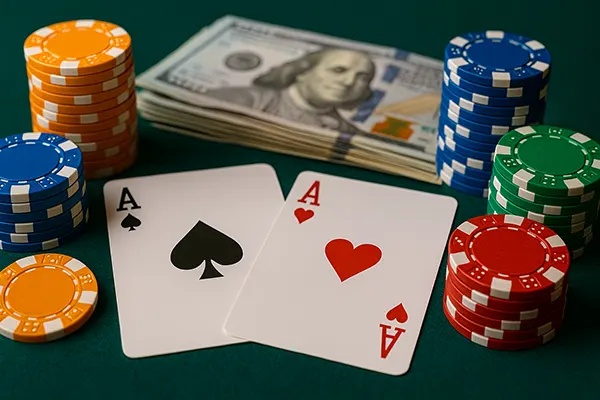
How to Play High Stakes and Stay Profitable: Stories from NL1000+ Pros
Playing at the highest stakes in online poker demands more than just skill—it requires psychological resilience, deep understanding of bankroll management, and a commitment to continuous learning. At the NL1000+ tables, every decision is scrutinised, and even the smallest mistake can lead to thousands in losses. Yet, despite the challenges, there are players who not only survive but thrive in this arena. This article explores the experiences of three professionals who’ve succeeded in staying profitable at these demanding limits as of June 2025.
Preparation Before Entering High Stakes
Before sitting at an NL1000+ table, players need more than a solid win rate at mid-stakes. Extensive hand analysis, the use of solvers, and months—if not years—of tracking their performance are common prerequisites. These players typically have a background of crushing lower stakes and gradually building the confidence and financial buffer required for the jump.
Advanced theoretical knowledge is essential. This includes mastering Game Theory Optimal (GTO) principles, understanding exploitative play, and being able to adjust strategies in real-time. Most high-stakes grinders consult with other top players regularly and often take part in study groups to exchange ideas and review sessions.
Lastly, psychological readiness cannot be overstated. At these levels, swings of tens of thousands of dollars are routine. Professionals must be emotionally stable, maintain focus during extended sessions, and avoid tilt at all costs. Some work with mindset coaches or psychologists who specialise in performance under pressure.
Case Study: “Alex V.” – Climbing from NL100
Alex V. began playing professionally in 2019 at NL100. By 2022, he had progressed to NL500 with a 7bb/100 win rate and entered NL1000 after consistently beating the lower limit over 300k hands. He credits his success to his intense database reviews, where he filters for specific board textures and bet sizings.
Alex’s key insight is volume control. Unlike at lower limits, he avoids mass multi-tabling and focuses on decision quality. “Fewer hands, higher precision,” he says. He also uses population tendencies and notes specific opponent leaks, even at high stakes, exploiting regulars who fall into predictable patterns.
As of June 2025, Alex reports a steady 3.1bb/100 win rate over his last 110k hands at NL1000 and higher. He continues to rely on collaborative hand reviews with a private Discord study group and uses PioSOLVER daily to refine river strategies.
Adapting Strategy Against Elite Opponents
At NL1000+, there is little room for automatic decisions. Even seemingly standard spots require customisation based on opponent tendencies, session dynamics, and metagame shifts. Players frequently run complex simulations to determine the most profitable approach in nuanced situations.
Bluff frequencies must be precisely calculated and balanced across all street textures. Similarly, value ranges are carefully structured to avoid over-bluffing or missing profitable thin value bets. Top players often develop unique strategies based on pool tendencies or specific reads on high-volume regulars.
In-game adjustments are crucial. Being rigidly GTO is insufficient against players who deviate significantly. Instead, the most profitable pros blend theory with targeted exploitation, constantly adjusting their lines based on the opponent’s level and historical behaviour.
Case Study: “Mikhail R.” – The Data-Driven Grinder
Mikhail entered the high-stakes scene in early 2023 after dominating Zoom NL500 on PokerStars. With a background in data science, he took a statistical approach to poker, creating custom software that analyses frequency data across hands and players.
His edge lies in understanding opponent habits in specific scenarios. For example, Mikhail targets players who under-bluff in river overbet spots and maximises EV by overfolding marginal bluff-catchers. “It’s about identifying what your opponents think they’re balancing—but aren’t,” he explains.
In 2025, Mikhail plays both regular and Zoom NL1000, mixing sessions across GGPoker and WPN. His recent stats show a 2.7bb/100 win rate over 90k hands, with most of his profits coming from carefully planned bluff-catching and exploitative value betting.

Managing Bankroll and Mental Fatigue
Staying profitable long-term requires more than talent. The volatility at these stakes can easily break undisciplined players. Therefore, professionals maintain strict bankroll management strategies, often using 100–200 buy-in rules depending on their risk tolerance and format preference.
Mental fatigue is a hidden threat. High-stakes players often deal with long downswings and psychological burnout. To counter this, many employ non-poker routines such as gym schedules, meditation, or even therapy. They treat poker like a sport, prioritising health and emotional balance to sustain performance.
Another key factor is game selection. While NL1000+ is mostly reg-infested, some sessions present soft lineups. Successful grinders stay vigilant, jumping into +EV spots and avoiding ego battles in bad games. Table selection remains an underrated skill even in the solver era.
Case Study: “Hannah K.” – Balancing Game and Life
Hannah started as a mid-stakes grinder in Europe and reached NL2000 by mid-2024. Her career has been marked by strategic shot-taking, often taking partial bankroll shots in soft private games while grinding tougher public tables at lower stakes to stay grounded.
Her edge lies in emotional regulation. She avoids volume goals and focuses instead on session quality. “Some months I play 15k hands, others only 5k. My rule is: if I’m not fully focused, I don’t log in,” she says. She also maintains a part-time yoga instruction business, which helps her disconnect between sessions.
In June 2025, Hannah is averaging 2.5bb/100 at NL2000 across two sites, with her best stretches coming from weekends in password-protected clubs. Her story shows that even at nosebleeds, success depends not just on EV but on emotional balance and lifestyle integration.

